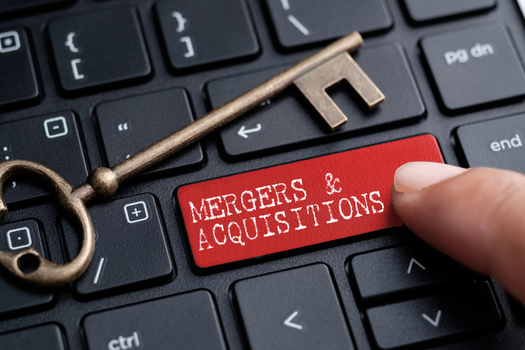This article has been written by Aswathy, pursuing the Diploma in M&A, Institutional Finance, and Investment Laws (PE and VC transactions) from LawSikho.
Table of Contents
Introduction
One of the biggest business revolutions that the world has seen in the past decade has been the exponential growth of e-commerce. The advent of the COVID-19 pandemic has forced the entire world to go digital with all their activities, including shopping, and this has acted as a boost to the already growing trend of online consumers. For an e-commerce business, their social media presence is one of their key channels of marketing and brand image, and goodwill, and in most cases counts as one of the legs that the company stands on. A company’s social media presence is classified as social media assets. Social media assets (hereinafter “SMA”) include all of the company’s active social media accounts, websites, blogs, YouTube channels, and mobile applications, and their components such as the followers or subscribers, content shared on these platforms, the likes, and comments on various posts etc.
Relevance of SMA and buyer’s interests
Most e-commerce businesses attract a large part of their customers through the company’s social media presence, especially through platforms such as Instagram, Linked In, and YouTube. Social media acts as the bridge to one of the major barriers faced by e-commerce businesses; that is not being able to provide the customer a real-time experience or feeling of the product. Although not a 100% substitute, social media helps the company to demonstrate their products through various ways and hence showcase to the customer the experience or feeling that the product can deliver. Visual branding via social media tremendously aids today’s companies to communicate to their customers what using the product could feel and look like, through pleasing and appealing aesthetics and visuals.
Therefore SMA brings with it its own value and is one of the important assets of the company. Hence in M&A transactions, it is pertinent that the acquirer does not undermine assigning value to and conducting due diligence on the digital assets of the company with a focus on SMA. Similar to how a buyer hedges themselves from liabilities and risks that may arise from the acquisition of assets of a company, it has become crucial for buyers to also protect themselves against risk exposure associated with the social media assets of a company.
Risks associated with SMA : what to look out for
1. Title/ownership
The selling company not having complete ownership or true control over their social media assets is one of the most displeasing things that a buyer may encounter post-closing of the deal. If the target company does not have ownership, employees may claim ownership to the same. Due to frequent termination or change of personnel that may take place during an acquisition process, this conflict of ownership between employees and the target company is especially crucial during M&A deals. Because they believe that the social media assets are their intellectual property, these dissatisfied employees who managed and controlled the social media accounts may refuse to hand over the passwords and credentials of these accounts.
2. Lack of proper policies
The target company must have adequate internal policies and guidelines relating to social media. This should include guidelines relating to the content shared or posted by employees, and for gaining access to the accounts. Further, buyers must also look out for policies that ensure that all employee-generated social media IP remains with the company. Target’s policies addressing infringement risks associated with user-generated content is also crucial. A lack of integrated policies which address all of the above may expose the buyer to numerous risks.
3. Third-party claims
Another risk that buyers may be exposed to while acquiring the social media assets of a target company is third-party claims for violations or infringement associated with the user-generated content. Companies will be responsible for their user-generated content and any claims on it such as trademark or copyright infringement, false advertising, or even defamation suits, based on the content put out by them. Companies can also be held accountable for influencer-generated content created for advertising their product or brand. The company must have a policy to control the authenticity of the content generated by sponsored influencers. The absence of the same can lead to high-risk exposure of the SMA.
4. Compliance
Social media usage has to be in compliance with the applicable rules and regulations, such as the Information Technology Act 2000 and the rules thereunder. Further, laws relating to intellectual property rights are also applicable to all user-generated content. Non-compliance with the law or any violations is yet another risk that SMA’s may carry. While checking compliance, buyers must also look out for company policies that ensure that employees and any influencers that they partner with, follow all rules and regulations.
5. Contractual/technological challenges with respect to a transfer of SMA content
Another impediment associated with social media assets is any contractual restrictions with respect to the transfer of social media accounts and their contents. This could include agreements entered into in the context of brand tie-ups, collaborations, partnerships with influencers, etc. This could affect the buyer’s taking over of the SMA post-closing. Further, any technical issues are also foreseeable when it comes to the process transfer of ownership of social media assets.
Representations and warranties that will protect the buyer
Having adequate safeguards in place is key to minimise buyer’s exposure. Considering the broad definition of social media accounts, a comprehensive set of social media representations and warranties would require the seller to provide a list of all social media accounts that the target company uses, operates, or maintains, as well as identification for each of them. This includes account names, user names, nicknames, display names, handles, and other identifiers registered, used, or held by or for the target company on social media. Further, the following are a few additional representations and warranties that can protect the buyer’s interests :
- That none of the social media accounts and their content violates or infringes any intellectual property rights of any third party.
- That the usage and operation of the social media accounts have been in compliance with:
- all applicable agreements such as terms of use, terms of service, and all terms and conditions,
- all the existing rules and regulations that are applicable to them.
- That the company has an employee’s social media policy which provides that the company shall have complete ownership and control over the SMAs and intellectual property associated generated by the employee for the company.
- That the employee’s terms of the contract include appropriate guidelines and restrictions regarding the use of the company’s social media accounts.
- That the employee’s terms of the contract require all employees to relinquish all social media account login credentials, passwords, and any and all log-in information to the company upon the event of termination of employment, or at any other time upon company’s request.
- That the buyer shall not be liable for any claims, suits, proceedings, complaints or other notices arising from the target company’s social media content and usage.
Case study
One of the landmark case laws in this matter is the U.S case of PhoneDog v. Noah Kravitz of the U.S District Court for the Northern District of California. Noah Kravitz was an employee of PhoneDog LLC, a company engaged in the review and promotion of mobile products and services. PhoneDog used various social media accounts for the same, and the same was operated by PhoneDog’s employees. Noah Kravitz, an employee, had created a Twitter account “@PhoneDog_Noah,” to promote PhoneDog and its services. When Kravitz was leaving PhoneDog four years later, he refused to hand over the Twitter account, and changed its name to “@noahkravitz,” and used its 17,000 followers base to promote his new employer. PhoneDog sued Kravitz for misappropriation of trade secrets and interference with economic advantage. Although the parties subsequently settled the matter and Kravitz continued using the “@noahkravitz” account, the Court had held that Kravitzs’ actions in the matter amounted to misappropriation of trade secrets. Companies with written policies on social media account ownership and written guidance on how workers should connect professionally with consumers climbed from 55% to 69% post this case, in the following years.
Conclusion
Social media assets are crucial to today’s businesses. Even from a financial standpoint, social media keeps marketing expenses low by reducing the need for conventional advertising, such as placing an ad in the newspaper or on the bus. A lot of the M&A activity in the recent past has included businesses that have a strong digital presence. Further, with more Thrasio model companies and startups entering the M&A space, there is bound to be an increase in acquisitions of e-commerce companies. Social media assets and its associated risks and liabilities form an important part of such deals. Therefore, buyers cannot afford to overlook the intricacies of the same.
References
- https://donahue.com/resources/publications/four-years-later-continuing-impact-phonedog-v-kravitz-ownership-business-related-social-media-accounts/
- https://odinlaw.com/risks-related-to-social-media-assets-during-a-merger-or-acquisition/
- https://uk.practicallaw.thomsonreuters.com/2-589-5050?transitionType=Default&contextData=(sc.Default)&firstPage=true
Students of LawSikho courses regularly produce writing assignments and work on practical exercises as a part of their coursework and develop themselves in real-life practical skills.
LawSikho has created a telegram group for exchanging legal knowledge, referrals, and various opportunities. You can click on this link and join:











